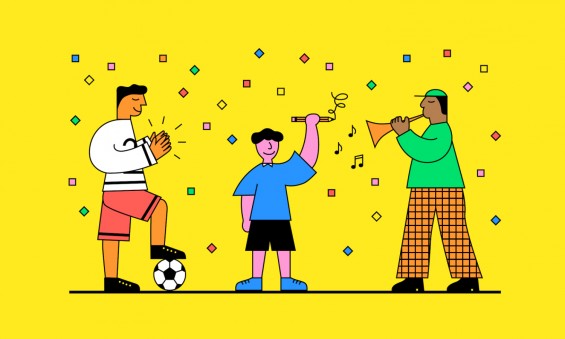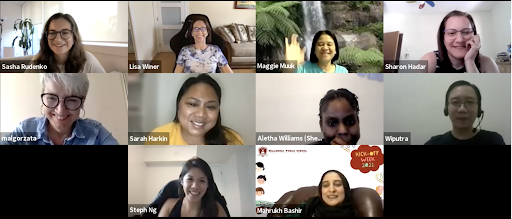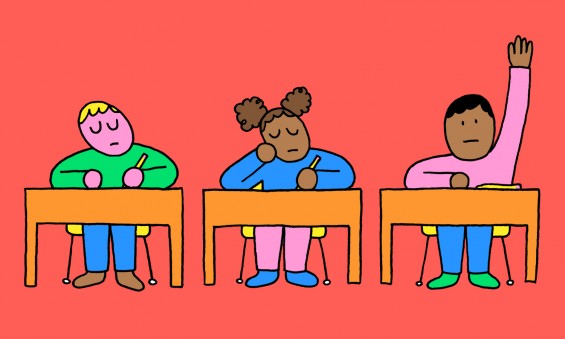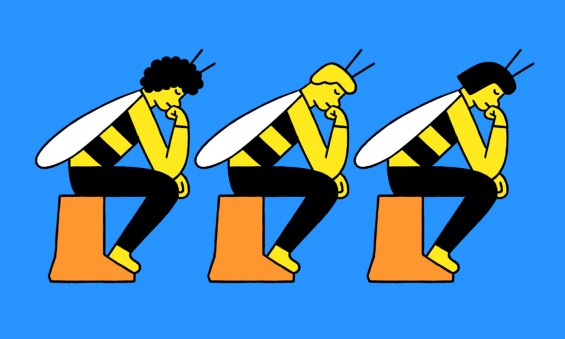
Assessing innovations from the pandemic and reinvesting in educator well-being: 9 educators share their learnings
This is part 2 in a series focusing on what educators are building through the TED-Ed Innovative Educator Alumni Innovation Projects. Read part 1 here.
The TED-Ed Innovative Educator Alumni Innovation Projects launched as a way to solve some of the most pressing issues in education by combining the strengths of inspiring educators who have completed the TED-Ed Innovative Educators (TIE) program. TIEs started the process by developing four Opportunity Statements based on problems they wanted to address in education right now. Those are:
1. Redesign instruction: Reimagine how instruction can comprehensively meet the needs of all students.
2. Redesign how we address inequities: Reimagine how to empower teachers and communities to address race, equity, inclusion, and justice issues.
3. Assess innovations from the COVID-19 pandemic: Assess how to carry forward the innovations created during the pandemic into full-time in-school instruction (and continue to build a culture of school/district innovation).
4. Reinvest in educators’ well-being: Reinvest in how best to support our teachers and admin, professionally, and personally.
Below we highlight some key takeaways from projects that were completed around two Opportunity Statements: assessing innovations from the COVID-19 pandemic and reinvesting in educators’ well-being.
Assessing innovations from the COVID-19 pandemic
Dylan Ferniany, Chief Academic Officer, K-5 (Alabama, USA)
“The COVID-19 pandemic upended the education system overnight. As we re-enter our new normal, we may want to jump right back into the way things were. We have an opportunity to do things differently. This project is a reflection on our pre-pandemic and post-pandemic practices.”
Through the development of her project, Dylan explains that virtual and in-person learning are not mutually exclusive. After conducting a survey, she found that not only have channels of communication between teachers and families become more fluid, but educational practices have also become more transparent – revealing a spectrum of learning options for both children and adults. Dylan suggests that reflecting on and integrating the practices that were introduced during the pandemic is invaluable to education today. These practices can help teachers and school administrators better serve their students across various modes of instruction.
Eric Johnson, 6th Grade Self-Contained Teacher (Indiana, USA)
“We were witnesses to and participants in a real paradigm upheaval, unprecedented uncertainty, and almost constantly changing direction from a lot of different input points. I wanted to capture the focus of changes in instructional practices.”
By speaking with a number of educators and leading external surveys, Eric brought to light the positives that arose from remote learning. His findings indicated that many respondents found their teacher-student relationships to be strong or stronger in virtual classrooms. Eric emphasizes that relationships and empathy are crucial during these times as teachers achieve a greater understanding of students and their environments through literally having windows into each others’ lives.
Lisa Winer, Math Teacher, Doctoral Student in Teaching and Learning (Florida, USA)
“My goal is to share educational findings during the time of COVID-19 on how to best foster student engagement and conversations about math, deepen learning, and lessen anxiety through educational technology and flipped learning.”
Lisa collected data through surveys and a focus group of students to gain a better understanding of how to innovate the teaching of mathematics in the 21st century classroom. She found that– from a student perspective– hybrid models, Google forms for questions, and devices in the classroom (such as a Wacom or an iPad) facilitate effective flipped learning. Lisa suggests implementing traditional teaching methods for new material and flipped learning for less complex material. Additionally, she recommends that educators create videos of their lessons for review so that all students are supported and can grow confidence in their learning.
Maggie Muuk, High School Language Teacher, English and Technology (Kching, Malaysia)
“Many students do not have sufficient access to gadgets or the internet to enable them to stay aligned with lessons and teachers do not have enough exposure [to these tools]. I integrated TED-Ed and I guided them through the ‘how’ and the ‘why.’”
Maggie created a supplementary program at her school using TED-Ed materials to foster students’ critical thinking, deepen their language learning, and develop their discussion skills. By working closely with teachers to promote exposure to a variety of learning tools, Maggie found that many students improved their reading and writing skills while also learning how to construct ideas.
Małgorzata Guzicka, High School Teacher (Legnica, Poland)
“I remember how surprised I was when I started sharing problems with other teachers and other TIEs and seeing how common these problems were. I thought students could have a similar platform where they could connect and share insights.”
After taking inspiration from the TIE program and similar spaces, Małgorzata intends to create an online space where students can learn from each other on an international scale. On this platform, students would be able to meet, learn how to express their opinions, learn about different cultures, improve their language skills, and receive emotional support– all while acknowledging their shared experiences. She was able to lead a call with multiple students and a fellow TIE, Maggie Muuk, and found that her students thoroughly enjoyed participating in the space. With her project, Małgorzata emphasizes the value of connection and collaboration in educational communities, especially during challenging times.
Mitzi Stover Former HS English and Speech Teacher, Current Community College English Teacher (California, USA)
“This is an opportunity to build a better educational system for all students. We should not be looking to ‘return to normal.’ What have we learned in the last sixteen months that we can bring back to our face-to-face classrooms? How can we make education even better?”
Mitzi’s project honed in on the implementation of hard and soft deadlines in the classroom. After identifying improved practices that resulted from virtual learning, Mitzi advocates for flexible deadlines as a way to promote student agency and overall equity. Benefits of hard and soft deadlines include the practice of time management for students and, for teachers, less daunting inboxes and more autonomous students.
Timothy Couillard, High School Physics and Ethics Teacher (Virginia, USA)
“How do we prevent the teacher from being the bottleneck and gatekeeper that stunts what the learning experience could be? How do we encourage authentic collective learning in students that is more than transactional?”
Timothy’s innovation hones in on the value of collective learning and collaborative adventure. For his project, Timothy proposed the creation of a system based on “open world” role-playing game mechanics whereby students have permission to guide their own learning experiences and iterate on each other’s work. Educators can create shared work spaces with an open media component for their students with simple tools like Google Sheets, for example. This framework can then be implemented in more structured core classes that often lack flexibility.
Reinvesting in educators’ well-being
Sarah Harkin, Student and Educator (Shanghai, China)
“I wanted to learn more about the systemic factors that contribute to and hinder teacher well-being. I hope to find real ways to help build teacher capacity and systemic support within schools in order to better prioritize teacher well-being, specifically mental health and work-life balance.”
From research collected from an educator well-being and wellness survey and prior literature, Sarah recognized that there seemed to be three categories of obstacles teachers collectively face: environmental (e.g. the systems they are a part of), personal (e.g. being a caregiver), and career-related (e.g. job requirements, mentorship). She advocates for solutions such as mental health days, restrictions on meetings per week, mental health resources, mentoring, and better training programs for teachers.
Sharon Hadar, Geography Teacher (Raanana, Israel)
“Teachers like nurses, doctors, and other professionals are the base of a community because we teach future generations. What do we need? Is it up to us to deal with our well-being?”
Sharon worked closely with other TIEs to create and distribute a survey regarding educator well-being. She stresses the importance of having a platform to monitor and collect data regarding the individual and collective teacher experience. With this data, members of educational institutions gain incredible insight about how to better serve teachers, students, and families overall.
Check out Part 1, which highlights TIE Innovation Projects addressing inequities in the classroom as well as approaches to redesigning instruction! Many of the TIEs are continuing their alumni engagement and are developing talks on their ideas of how to better education. Updates on TIE talks will be shared in the coming months. And check out our Educator Talks channel, which is dedicated to celebrating and elevating the ideas of educators working in classrooms and schools throughout the world.





